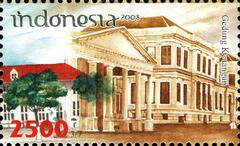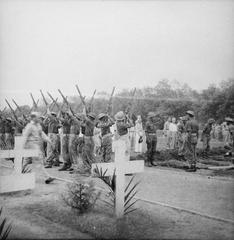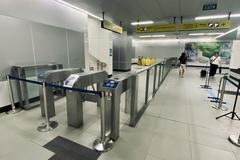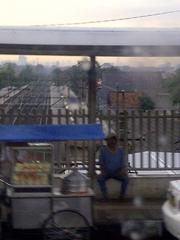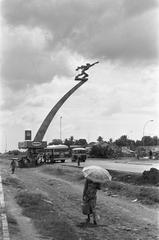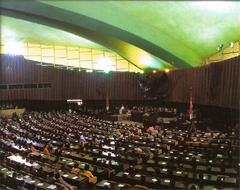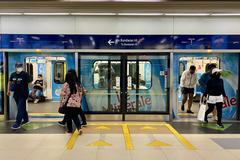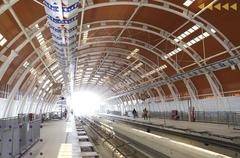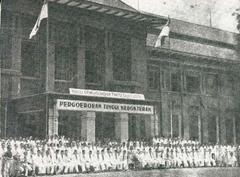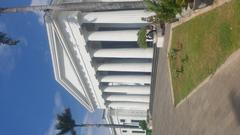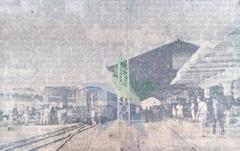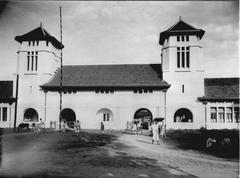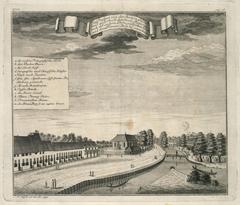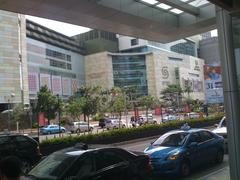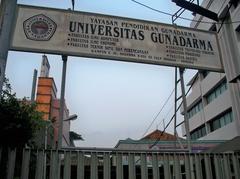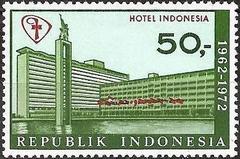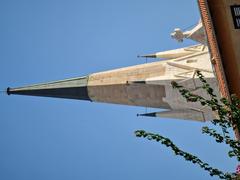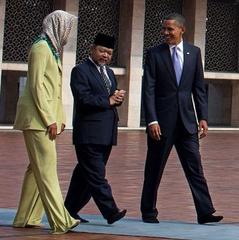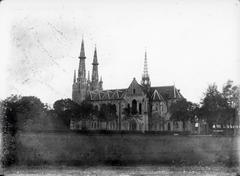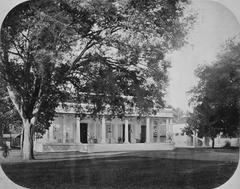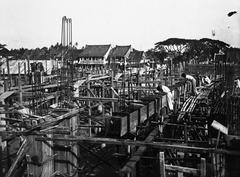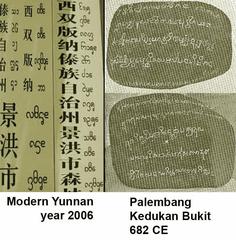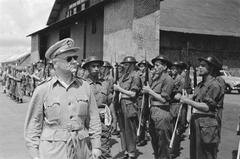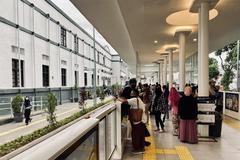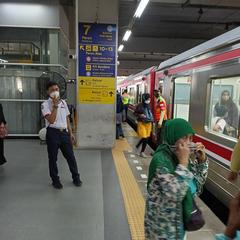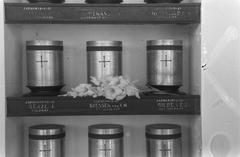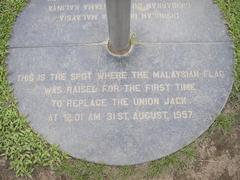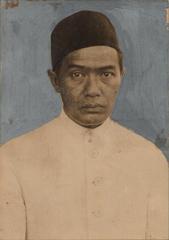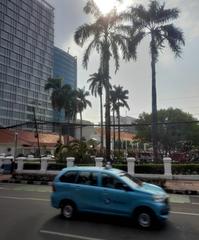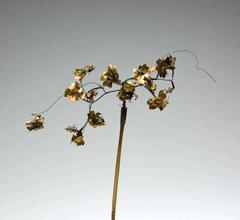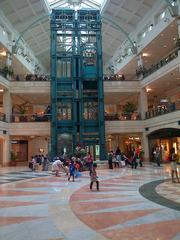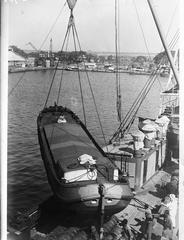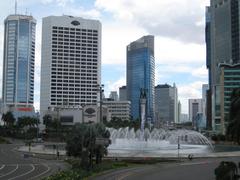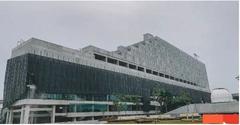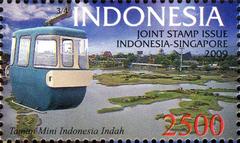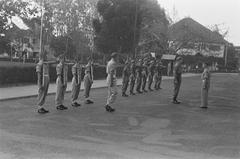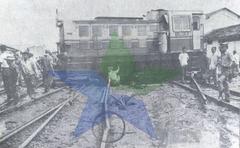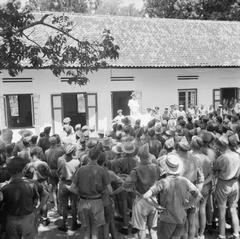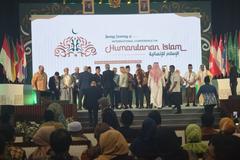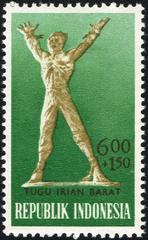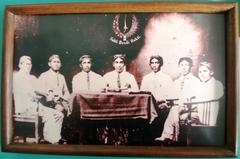Visiting Candra Naya: Jakarta’s Historic Mansion – Guide, Tickets, and Visiting Hours
Date: 04/07/2025
Introduction
Candra Naya is a celebrated historical mansion located in the heart of Jakarta’s Chinatown, Glodok, and stands as a testament to the city’s rich multicultural heritage and the continued legacy of the Chinese-Indonesian community. Originally built in the early 19th century by the influential Khouw family, Candra Naya is renowned for its distinctive southern Chinese architectural features, including sweeping roofs, moon gates, and tranquil courtyards. The site has evolved from a private residence into a vital cultural and social center, surviving the pressures of urban development through concerted conservation efforts.
This comprehensive guide provides detailed information for planning your visit to Candra Naya—covering its history, architectural highlights, visiting hours, ticketing, accessibility, and tips for a meaningful experience. Whether you are a history enthusiast, an admirer of architecture, or a cultural explorer, Candra Naya offers a window into Jakarta’s layered past and dynamic present.
For further reading and detailed visitor insights, see Candra Naya Jakarta: Visiting Hours, Tickets, and Historical Significance and Exploring Candra Naya: Visiting Hours, Tickets, and History of Jakarta’s Chinese Heritage Site.
Historical Background and Cultural Significance
Origins and Early History
Candra Naya was constructed in 1807 by Khouw Tian Sek, a prominent member of the Khouw family of Tamboen, one of the leading Chinese-Indonesian families during the Dutch colonial era (javaprivatetour.com). The house later became the residence of Khouw Kim An, the last Majoor der Chinezen (Mayor of the Chinese) in Batavia (now Jakarta), whose leadership and legacy made the mansion a symbol of the Chinese community’s social and political status (Wikipedia).
Architectural Features
Candra Naya exemplifies a harmonious blend of traditional Chinese and European architectural styles. Key features include:
- Curving Rooflines and Moon Gates: The distinctive upturned eaves and circular doorways are hallmarks of southern Chinese residential architecture (Lonely Planet).
- Ornate Carvings and Decorative Elements: The mansion is adorned with gold detailing, intricate woodwork, and stained glass windows. The glass roof in the main hall (a “sky well”) symbolizes openness and the flow of positive energy, while the tranquil courtyard with koi pond offers a peaceful retreat (javaprivatetour.com).
- Interiors: Chinese tapestries, Peking opera masks, and portraits of the Khouw family provide insight into the cultural heritage of the Chinese-Indonesian elite (photodharma.net).
Transformation Over Time
After World War II, Candra Naya was transferred to Sin Ming Hui (the New Light Society), a Chinese social and educational organization. It served as an educational institute, a medical clinic, and a hub for various social activities (Wikipedia). The building’s role as a social center underscored its adaptability and enduring importance to Jakarta’s Chinese community, hosting everything from weddings to sports tournaments.
Preservation Amidst Urban Change
In the 1990s, urban development threatened Candra Naya’s existence when plans were made to replace it with a commercial superblock (photodharma.net). Widespread protests led to preservation of the main buildings, and subsequent restoration in 2012 secured its status as a protected heritage site under Jakarta’s cultural property laws. Today, Candra Naya stands as a rare survivor, integrated into the modern Green Central City complex while retaining its historical core (javaprivatetour.com).
Visiting Candra Naya: Practical Information
Location and Getting There
- Address: Jalan Gajah Mada No. 188, Glodok, West Jakarta
- Public Transport: Easily reached by TransJakarta bus and ride-hailing services. The nearest bus stop is within walking distance (Omeeyo).
- Parking: Available nearby for private vehicles and tour buses.
Visiting Hours
- Tuesday to Sunday: 9:00 AM – 5:00 PM
- Closed: Mondays and national public holidays
(Note: Some sources list slightly different hours—always check ahead for special events or seasonal changes.)
Ticket Information
- Adults: IDR 20,000
- Children/Students: IDR 10,000
- Groups and Tours: Discounts and guided tours may be available; inquire in advance.
- Free Admission: In some cases, entry may be free, especially during cultural festivals or special exhibitions. Confirm on the day of your visit.
Accessibility
Candra Naya is partially wheelchair accessible, with ramps and clear pathways in the main areas. Some original sections may have uneven floors due to the historic nature of the building. For specific accessibility needs, contact the site management ahead of your visit.
Guided Tours and Special Events
- Guided Tours: Available daily and recommended for a deeper understanding of the mansion’s history and architecture. Tours are usually conducted in Indonesian, with English available by arrangement.
- Cultural Events: Candra Naya hosts celebrations such as Chinese New Year, exhibitions, and community festivals. Event schedules are posted on official tourism websites.
Visitor Experience: What to See and Do
Architectural Highlights
- Entry Pavilion: Features grand wooden columns and traditional stone plinths.
- Courtyard: A central open space with koi pond, bonsai, and traditional landscaping.
- Moon Gates and Rooflines: Iconic architectural elements ideal for photography.
- Decorative Details: Intricate carvings, calligraphy plaques, and murals depicting Chinese folklore.
Museum and Exhibitions
- Peranakan Museum: On-site displays narrate the story of the Khouw family and the broader Chinese-Indonesian experience.
Amenities
- Restrooms: Available on site.
- Shaded Courtyard: Seating areas for rest and reflection.
- Cafés and Shops: Several local eateries and coffee shops are located just outside the complex.
Visitor Tips and Etiquette
- Dress Modestly: Cover shoulders and knees to respect cultural norms.
- Respect the Site: Avoid touching artifacts and maintain quiet in main halls.
- Photography: Allowed without flash; tripods may require staff permission.
- Best Time to Visit: Early mornings and late afternoons are cooler and less crowded, especially during the dry season (April–October) (Wanderlog).
Nearby Attractions and Suggested Itinerary
Combine your visit to Candra Naya with other highlights of Jakarta’s Chinatown and Old Town:
- Glodok Market: Explore traditional Chinese goods and street food.
- Petak Sembilan Temple: One of Jakarta’s oldest Chinese temples.
- Museum Bank Indonesia: Learn about the city’s economic and colonial history.
- Kota Tua (Old Town): Discover Dutch colonial architecture and museums.
Suggested itinerary: Start with Candra Naya, enjoy lunch in Glodok, and spend the afternoon exploring nearby heritage sites.
Frequently Asked Questions (FAQ)
Q: What are Candra Naya’s visiting hours?
A: Tuesday to Sunday, 9:00 AM–5:00 PM; closed Mondays and public holidays.
Q: How much is admission?
A: Adults: IDR 20,000; Children/Students: IDR 10,000. Admission may be free during special events—check in advance.
Q: Are guided tours available?
A: Yes, and advance booking is recommended, especially for groups.
Q: Is the site wheelchair accessible?
A: Main areas are accessible, but some historic sections have uneven flooring.
Q: Can I take photos?
A: Yes, photography is permitted without flash; tripods require staff approval.
Q: Are there nearby attractions?
A: Yes, including Glodok Market, Petak Sembilan Temple, and Kota Tua.
Preservation Status and Community Engagement
Candra Naya is protected as a cultural heritage site by the city of Jakarta and the Ministry of Education and Culture. Restoration and maintenance are supported by both government and private funds, particularly from Modernland Realty. Heritage societies advocate for integrated preservation of both the structure and its surrounding context, while ongoing educational programs and cultural festivals foster public appreciation and engagement (jakartawalkingtour.com).
Visual Resources and Virtual Tours
- On-Site: Signage and displays explain architectural and historical details.
- Online: Explore virtual tours and interactive maps for a preview or remote experience.
- Photography: Capture the iconic moon gates, rooflines, and tranquil courtyards.
Conclusion and Call to Action
Candra Naya stands as a vibrant symbol of Jakarta’s multicultural history and the resilience of heritage preservation in a modern metropolis. Its unique architecture, storied past, and ongoing role as a cultural gathering place make it a must-visit for anyone exploring Jakarta’s historical landscape. Plan your visit according to current hours and ticket information, take part in guided tours, and immerse yourself in the living history of Candra Naya.
For more travel insights, download the Audiala app, explore related articles on Jakarta’s heritage sites, and follow us on social media for the latest updates and cultural event news.
Sources
- Candra Naya Jakarta: Visiting Hours, Tickets, and Historical Significance (2023)
- Exploring Candra Naya: Visiting Hours, Tickets, and History of Jakarta’s Chinese Heritage Site (2011)
- Candra Naya Wikipedia (2024)
- Lonely Planet: Candra Naya Guide (2024)
- Photodharma: Candra Naya Historical and Cultural Overview (2023)
- Jakarta Walking Tour: Candra Naya and Chinatown (2024)
- Omeeyo: Candra Naya Building Sightseeing
- Wanderlog: Gedung Candra Naya
